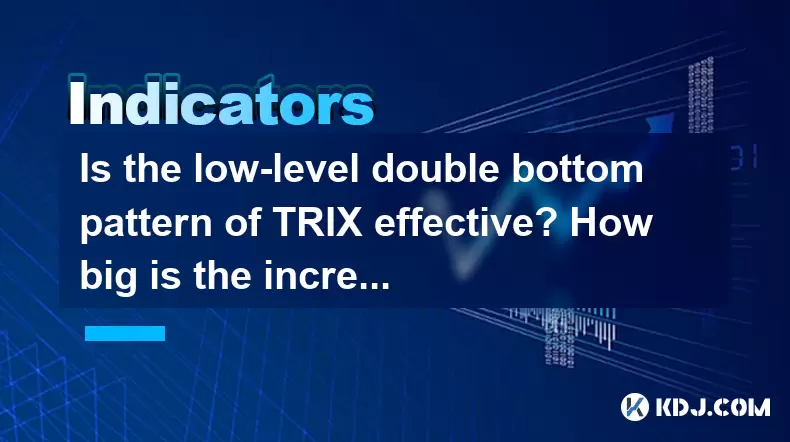-
 Bitcoin
Bitcoin $117900
-2.85% -
 Ethereum
Ethereum $4559
-2.84% -
 XRP
XRP $3.068
-5.67% -
 Tether USDt
Tether USDt $1.000
0.02% -
 BNB
BNB $836.7
-0.81% -
 Solana
Solana $193.2
-2.38% -
 USDC
USDC $0.9998
0.00% -
 TRON
TRON $0.3591
-0.32% -
 Dogecoin
Dogecoin $0.2238
-7.20% -
 Cardano
Cardano $0.9090
4.71% -
 Chainlink
Chainlink $22.55
-4.36% -
 Hyperliquid
Hyperliquid $44.78
-2.41% -
 Sui
Sui $3.771
-4.47% -
 Stellar
Stellar $0.4199
-6.18% -
 Bitcoin Cash
Bitcoin Cash $587.8
-5.02% -
 Ethena USDe
Ethena USDe $1.001
-0.01% -
 Hedera
Hedera $0.2493
-5.06% -
 Avalanche
Avalanche $23.66
-5.54% -
 Litecoin
Litecoin $121.0
-6.80% -
 Toncoin
Toncoin $3.383
-2.39% -
 UNUS SED LEO
UNUS SED LEO $9.287
0.47% -
 Shiba Inu
Shiba Inu $0.00001286
-6.48% -
 Uniswap
Uniswap $10.94
-9.06% -
 Polkadot
Polkadot $3.979
-5.53% -
 OKB
OKB $96.24
-3.88% -
 Dai
Dai $0.9997
0.00% -
 Bitget Token
Bitget Token $4.570
-4.16% -
 Cronos
Cronos $0.1510
-8.87% -
 Ethena
Ethena $0.7251
-6.96% -
 Aave
Aave $310.8
-4.73%
Is the low-level double bottom pattern of TRIX effective? How big is the increase?
The low-level double bottom pattern on the TRIX indicator signals potential bullish reversals in crypto, with historical data showing up to 20% increases post-confirmation.
May 22, 2025 at 12:07 pm

The low-level double bottom pattern of the Triple Exponential Average (TRIX) indicator is a technical analysis tool that many cryptocurrency traders use to identify potential bullish reversals. This pattern, when observed at a low level, can signal a significant shift in market sentiment from bearish to bullish. In this article, we will delve into the effectiveness of the low-level double bottom pattern of TRIX and explore the potential increase that traders might expect upon recognizing this pattern.
Understanding the TRIX Indicator
Before we dive into the specifics of the double bottom pattern, it's essential to understand what the TRIX indicator is. TRIX, or the Triple Exponential Average, is a momentum oscillator that displays the percentage change of a triple-smoothed exponential moving average of a security's closing price. It is designed to filter out insignificant price movements and help traders identify the true trend direction.
TRIX is calculated using the following steps:
- Calculate the exponential moving average (EMA) of the closing prices.
- Calculate the EMA of the result from the first step.
- Calculate the EMA of the result from the second step.
- Calculate the percentage change of the triple-smoothed EMA.
The Low-Level Double Bottom Pattern
A double bottom pattern is a chart pattern that signals a potential reversal from a downtrend to an uptrend. When this pattern forms at a low level, it suggests that the selling pressure has exhausted itself, and buyers are starting to take control. In the context of the TRIX indicator, a low-level double bottom pattern is identified when the TRIX line forms two troughs at roughly the same level, separated by a peak.
To identify a low-level double bottom pattern on the TRIX indicator:
- Look for the TRIX line to reach a low point and start to rise.
- Observe the TRIX line to fall back to a similar low level, forming the second trough.
- Confirm the pattern by watching the TRIX line rise above the peak between the two troughs.
Effectiveness of the Low-Level Double Bottom Pattern
The effectiveness of the low-level double bottom pattern of TRIX can vary based on market conditions and the specific cryptocurrency being analyzed. Historical data and backtesting are essential tools for assessing the reliability of this pattern. Traders often analyze past instances of the pattern to determine its success rate and the average increase following its formation.
Several factors can influence the effectiveness of the pattern:
- Market Volatility: In highly volatile markets, the pattern may be less reliable due to frequent price fluctuations.
- Volume: A significant increase in trading volume during the formation of the second trough can enhance the reliability of the pattern.
- Confirmation Signals: Additional technical indicators, such as the Relative Strength Index (RSI) or Moving Average Convergence Divergence (MACD), can provide confirmation of the pattern's validity.
Potential Increase Following the Pattern
The potential increase following the recognition of a low-level double bottom pattern on the TRIX indicator can vary widely. Backtesting and statistical analysis of historical data can provide insights into the average increase observed after the pattern's formation. For example, a study might reveal that, on average, a cryptocurrency experiences a 10% to 20% increase in value within a certain timeframe following the pattern's confirmation.
It's important to note that the potential increase is not guaranteed and can be influenced by various market factors:
- Overall Market Sentiment: If the broader market is experiencing a bullish trend, the potential increase may be higher.
- Fundamental News: Positive news about the cryptocurrency or its underlying technology can amplify the increase.
- Resistance Levels: The presence of significant resistance levels can limit the potential increase.
Case Studies and Examples
To provide a practical understanding of the low-level double bottom pattern of TRIX, let's look at a few case studies and examples from the cryptocurrency market.
- Bitcoin (BTC): In early 2020, Bitcoin exhibited a low-level double bottom pattern on the TRIX indicator. Following the pattern's confirmation, BTC experienced a significant increase, rising from approximately $6,000 to over $10,000 within a few months.
- Ethereum (ETH): In mid-2019, Ethereum formed a low-level double bottom pattern on the TRIX indicator. After the pattern's confirmation, ETH saw a 30% increase in value over the next month.
These examples illustrate the potential for significant increases following the recognition of the pattern. However, it's crucial for traders to conduct their own analysis and not rely solely on historical examples.
Trading Strategies Based on the Pattern
Traders can develop various strategies to capitalize on the low-level double bottom pattern of TRIX. Here are a few common approaches:
- Entry and Exit Points: Enter a long position once the TRIX line breaks above the peak between the two troughs. Set a stop-loss order below the second trough to manage risk. Exit the position when the TRIX line shows signs of reversing or when a predetermined profit target is reached.
- Position Sizing: Adjust position sizes based on the potential increase and the trader's risk tolerance. A larger potential increase may justify a larger position size, but risk management remains crucial.
- Combining with Other Indicators: Use additional technical indicators to confirm the pattern and enhance the reliability of the trading signal. For example, a bullish divergence on the RSI can strengthen the case for a bullish reversal.
Risk Management and Considerations
While the low-level double bottom pattern of TRIX can be a powerful tool for identifying potential bullish reversals, it's essential to approach trading with a robust risk management strategy. Setting stop-loss orders and managing position sizes are critical components of successful trading.
Consider the following risk management tips:
- Diversify: Do not allocate all capital to a single trade based on the pattern. Diversify across different cryptocurrencies and trading strategies.
- Backtesting: Regularly backtest trading strategies to ensure they remain effective in different market conditions.
- Stay Informed: Keep up-to-date with market news and events that could impact the cryptocurrency being traded.
Frequently Asked Questions
Q: Can the low-level double bottom pattern of TRIX be used for short-term trading?
A: Yes, the pattern can be used for short-term trading, but it's important to adjust the timeframe of the TRIX indicator to align with short-term trading goals. A shorter timeframe may result in more frequent but potentially less reliable signals.
Q: How does the low-level double bottom pattern of TRIX compare to other technical indicators?
A: The TRIX indicator's low-level double bottom pattern is unique in its use of triple-smoothed exponential moving averages, which can filter out minor price fluctuations. Compared to other indicators like the MACD or RSI, TRIX may provide more reliable signals in certain market conditions but should be used in conjunction with other tools for confirmation.
Q: Are there any cryptocurrencies where the low-level double bottom pattern of TRIX is particularly effective?
A: The effectiveness of the pattern can vary across different cryptocurrencies. It may be more reliable for cryptocurrencies with higher liquidity and trading volumes, such as Bitcoin and Ethereum, due to the increased data available for analysis.
Q: How can traders avoid false signals from the low-level double bottom pattern of TRIX?
A: To avoid false signals, traders should use additional confirmation tools, such as volume analysis and other technical indicators. Waiting for the TRIX line to break above the peak between the troughs with significant volume can enhance the reliability of the signal.
Disclaimer:info@kdj.com
The information provided is not trading advice. kdj.com does not assume any responsibility for any investments made based on the information provided in this article. Cryptocurrencies are highly volatile and it is highly recommended that you invest with caution after thorough research!
If you believe that the content used on this website infringes your copyright, please contact us immediately (info@kdj.com) and we will delete it promptly.
- Kazakhstan's Crypto Leap: Bitcoin ETF and Central Asia's Digital Finance Future
- 2025-08-13 12:45:19
- BlockDAG Presale Blazes Past $371M: Fundraising Frenzy Fuels Crypto Sensation
- 2025-08-13 13:05:21
- Meme Coins: Chasing the 2025 Surge – Which Will Moonshot?
- 2025-08-13 10:25:23
- Bitcoin's Wild Ride: Rally, Pullback, and What's Next
- 2025-08-13 10:25:23
- Bitcoin, Bitmax, and Institutional Demand: A New Era of Crypto Investment
- 2025-08-13 10:45:12
- Solana, ROAM, and Airdrops: What's the Buzz in 2025?
- 2025-08-13 11:35:13
Related knowledge

What does it mean when the +DI and -DI cross frequently in the DMI indicator but the ADX is flattening?
Aug 11,2025 at 03:15am
Understanding the DMI Indicator ComponentsThe Directional Movement Index (DMI) is a technical analysis tool composed of three lines: the +DI (Positive...

What does the sudden appearance of a "dark cloud cover" candlestick pattern during an uptrend indicate?
Aug 13,2025 at 11:35am
Understanding the 'Dark Cloud Cover' Candlestick PatternThe dark cloud cover is a bearish reversal pattern in technical analysis that typically appear...

What does it mean when the moving average, MACD, and RSI all send buy signals simultaneously?
Aug 11,2025 at 01:42pm
Understanding the Convergence of Technical IndicatorsWhen the moving average, MACD, and RSI all generate buy signals at the same time, traders interpr...

What does it mean when both the KDJ indicator and the RSI show overbought signals simultaneously?
Aug 13,2025 at 11:35am
Understanding the KDJ Indicator in Cryptocurrency TradingThe KDJ indicator is a momentum oscillator derived from the Stochastic Oscillator, widely use...

What does it mean when the price is trading above the SAR indicator but the red dots are densely packed?
Aug 09,2025 at 11:49pm
Understanding the SAR Indicator and Its Visual SignalsThe SAR (Parabolic Stop and Reverse) indicator is a technical analysis tool used primarily to de...

What does it mean when the candlestick chart forms a "Morning Star" but trading volume is sluggish?
Aug 12,2025 at 06:28pm
Understanding the Morning Star Candlestick PatternThe Morning Star is a three-candle bullish reversal pattern commonly observed in cryptocurrency pric...

What does it mean when the +DI and -DI cross frequently in the DMI indicator but the ADX is flattening?
Aug 11,2025 at 03:15am
Understanding the DMI Indicator ComponentsThe Directional Movement Index (DMI) is a technical analysis tool composed of three lines: the +DI (Positive...

What does the sudden appearance of a "dark cloud cover" candlestick pattern during an uptrend indicate?
Aug 13,2025 at 11:35am
Understanding the 'Dark Cloud Cover' Candlestick PatternThe dark cloud cover is a bearish reversal pattern in technical analysis that typically appear...

What does it mean when the moving average, MACD, and RSI all send buy signals simultaneously?
Aug 11,2025 at 01:42pm
Understanding the Convergence of Technical IndicatorsWhen the moving average, MACD, and RSI all generate buy signals at the same time, traders interpr...

What does it mean when both the KDJ indicator and the RSI show overbought signals simultaneously?
Aug 13,2025 at 11:35am
Understanding the KDJ Indicator in Cryptocurrency TradingThe KDJ indicator is a momentum oscillator derived from the Stochastic Oscillator, widely use...

What does it mean when the price is trading above the SAR indicator but the red dots are densely packed?
Aug 09,2025 at 11:49pm
Understanding the SAR Indicator and Its Visual SignalsThe SAR (Parabolic Stop and Reverse) indicator is a technical analysis tool used primarily to de...

What does it mean when the candlestick chart forms a "Morning Star" but trading volume is sluggish?
Aug 12,2025 at 06:28pm
Understanding the Morning Star Candlestick PatternThe Morning Star is a three-candle bullish reversal pattern commonly observed in cryptocurrency pric...
See all articles

























































































